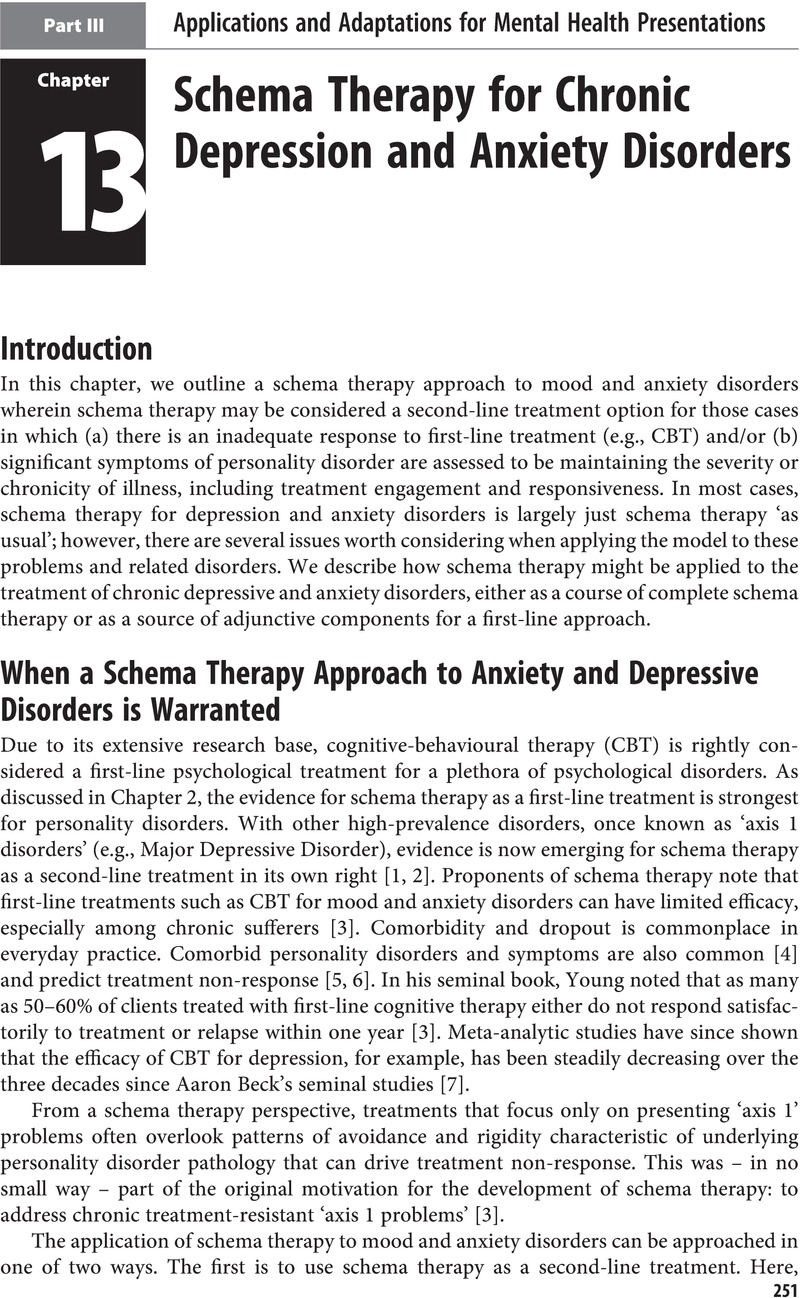Book contents
- Cambridge Guide to Schema Therapy
- Cambridge Guides to the Psychological Therapies
- Reviews
- Cambridge Guide to Schema Therapy
- Copyright page
- Contents
- Foreword
- Preface
- A Note from the Series Editor
- Acknowledgements
- Part I Overview of the Schema Therapy Model
- Part II The Model of Schema Therapy in Practice
- Part III Applications and Adaptations for Mental Health Presentations
- Part IV Application of Schema Therapy in Different Populations and in Different Settings
- Appendix Interview Questions/Guidance for the Assessment Process (Chapter 3)
- Index
- References
Part III - Applications and Adaptations for Mental Health Presentations
Published online by Cambridge University Press: 27 July 2023
- Cambridge Guide to Schema Therapy
- Cambridge Guides to the Psychological Therapies
- Reviews
- Cambridge Guide to Schema Therapy
- Copyright page
- Contents
- Foreword
- Preface
- A Note from the Series Editor
- Acknowledgements
- Part I Overview of the Schema Therapy Model
- Part II The Model of Schema Therapy in Practice
- Part III Applications and Adaptations for Mental Health Presentations
- Part IV Application of Schema Therapy in Different Populations and in Different Settings
- Appendix Interview Questions/Guidance for the Assessment Process (Chapter 3)
- Index
- References
Summary

- Type
- Chapter
- Information
- Cambridge Guide to Schema Therapy , pp. 251 - 288Publisher: Cambridge University PressPrint publication year: 2023

